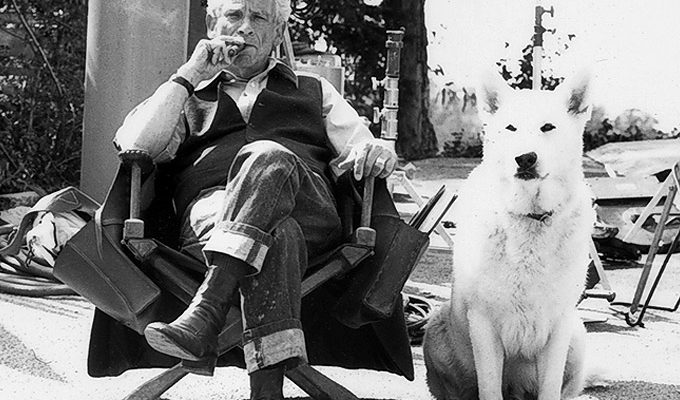 The great Sam Fuller began life as a crime reporter at the age of 17, before writing pulp novels and doing mostly uncredited work on screenplays through the 1930s (his first credit was on 1936’s “Hats Off“). He served in World War Two, seeing action in France, Italy and North Africa, as well as being present at (and filming) the liberation of the concentration camp at Sokolov. By the time he came to direct in 1939 — having been inspired by his anger at what Douglas Sirk did to his screenplay “Shockproof” — Fuller would infuse his work with his experience as both a journalist and a soldier.
The great Sam Fuller began life as a crime reporter at the age of 17, before writing pulp novels and doing mostly uncredited work on screenplays through the 1930s (his first credit was on 1936’s “Hats Off“). He served in World War Two, seeing action in France, Italy and North Africa, as well as being present at (and filming) the liberation of the concentration camp at Sokolov. By the time he came to direct in 1939 — having been inspired by his anger at what Douglas Sirk did to his screenplay “Shockproof” — Fuller would infuse his work with his experience as both a journalist and a soldier.
Indeed, the director once made a parallel between moviemaking and war in a quote that served as something of a mission statement for his career “Film is like a battleground, with love, hate, action, violence, death…in one word, emotion.” Shooting with both a journalistic eye and a heightened style, producing work that was simultaneously crass and subtle, he’s one of the great pulp filmmakers, and a director who proved a huge influence on everyone. Especially cinephiles and directors who would go on to become much more famous than he. The Nouvelle Vague adored him (Francois Truffaut, etc.) and Jean-Luc Godard would go as far paying him open tribute by giving him a cameo in “Pierrot Le Fou.” Wim Wenders would do the same with Fuller’s small part in “The American Friend.” Other admirers would include Martin Scorsese, Jim Jarmusch and Quentin Tarantino. Even if career problems meant that he never became the household name he should have been (he didn’t direct between 1972 and 1980, and the misreading of 1982’s “White Dog” saw him become a pariah in Hollywood), Fuller’s lasting stamp on cinema is still felt today.
Fuller was born 100 years ago this weekend, on August 12th 1912, and to mark the occasion, we wanted to pick out five of the director’s greatest pictures as a little taster of the fine films that he produced throughout his career. Read on for more, and if we left out your favorite Fuller flick, you can argue your case in the comments section below.
 “Pickup On South Street” (1953)
“Pickup On South Street” (1953)
A fairly direct inspiration for Robert Bresson‘s “Pickpocket” (a title Fuller wanted to use for this film, but was rejected after studio bosses found it “too European”), Fuller’s follow up to his self-financed passion project “Park Row” isn’t his most personal project by a long way, but it’s certainly one of his leanest and most entertaining films. It kicks off as pickpocket Skip McCoy (Richard Widmark) lifts a wallet belonging to Candy (Jean Peters, who would later marry Howard Hughes), a wallet that, unbeknownst to either of them, is carrying secret government information that Candy’s ex boyfriend, a Communist spy, is trying to get to his Soviet masters. Pursued by cops, the government and the communists, he tries to play the sides off against each other for his own profit, with tragic consequences for his friend Moe (an Oscar-nominated Thelma Ritter). Written down, the plot (which is really an espionage thriller in film noir trappings) is sort of ludicrous, but Fuller leaves so little fat on the 80-minute picture that you’re immediately swept up in its pulpy charms, left breathless by the end. And it helps that the film is both sexy and brutal for its time, even after the Production Code had their way with the script. Fuller doesn’t always get credit as a director of actors, but here, his cast are all pretty much superb (Peters is a little wooden, but fits the part’s sheer sexuality well enough that it doesn’t matter too much), especially Widmark, who simultaneously plays notes of both weaselly self-interest and long-buried good-heartedness, and Ritter, who doesn’t get a lot of screen time, but makes the most of every single second. Even today, few thrillers are as tough or as entertaining, and the Criterion version is thoroughly recommended.

